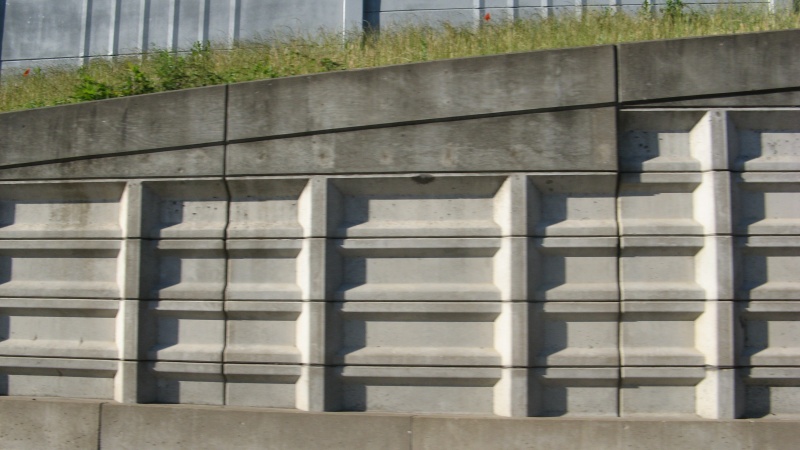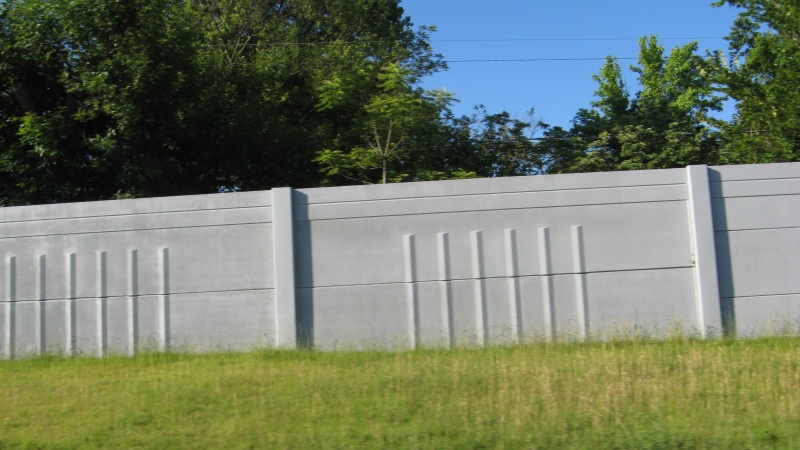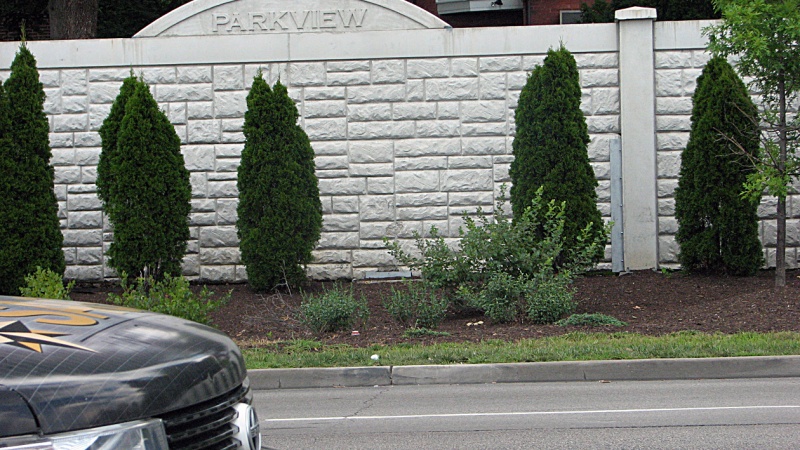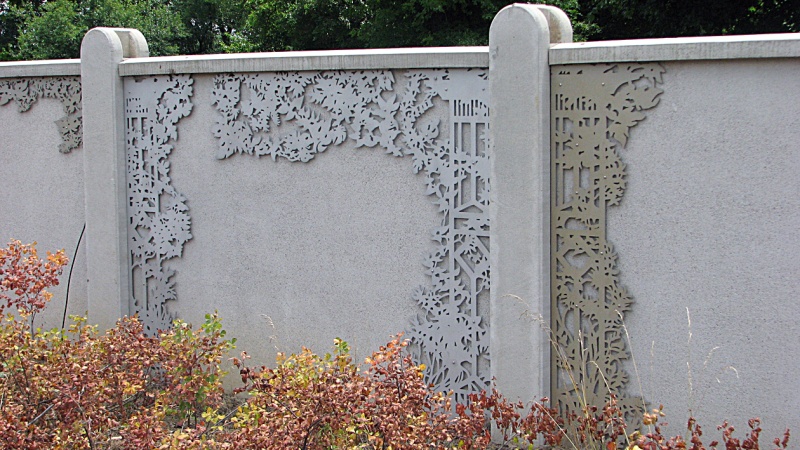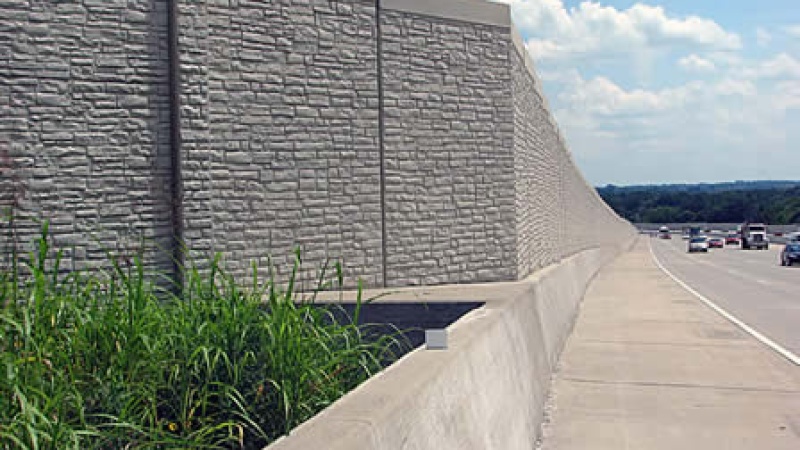The Missouri Department of Transportation's St. Louis Metro District maintains more than 1,600 miles of roadway in the region. Since St. Louis is a major metropolitan area, many people live alongside these roadways. MoDOT studies sound impacts from its projects based on federal and state environmental criteria. When it evaluates an area for sound mitigation, the department must balance the potential impact to the homeowners or residents with the costs to taxpayers and the overall safety of the walls.
WHY build sound walls?
The Federal Highway Administration (FHWA) requires MoDOT to conduct a sound study any time it plans to add lanes to an existing highway or change the location of a road. FHWA sets guidelines for sound mitigation, and all states are required to set up their policies for sound walls within those guidelines.
Sound walls can help lessen the noise impacts of the roadway improvement and provide noticeable sound reduction for houses closest to the highway. They do this by providing a barrier between houses and highway traffic. Communities are eligible for a sound wall only if noise levels exceed 66 decibels. A sound wall must reduce noise levels by at least seven decibels.
Various Sound Walls in St. Louis
WHEN does MoDOT get involved in sound wall construction?
MoDOT considers constructing sound walls as part of new road construction projects when the department:
- builds a new road or interchange on new location,
- adds lanes to an existing highway,
- or changes the location of the roadway.
Sound Studies and Sound Wall Criteria
If the department is constructing one of the above projects, it conducts a sound study and evaluates the project for sound walls. Normally a project is divided into several study areas. Each study area would normally be associated with a single possible sound wall. Normally, a study area on a highway or interstate will consist of one side of the roadway between interchanges.
To be eligible to be constructed, any particular sound wall must meet the following criteria:
- Predicted noise levels for the highway must exceed 66 decibels in the study area
- All of the first row properties must have a reduction of at least 7 decibels in the outdoor living space (usually the outdoor area nearest to the roadway)
- The sound wall cannot be taller than 20 feet for safety
- The sound wall must be built on state property and meet safety and maintenance requirements
- The sound wall must require less than 1,300 square feet of wall (on average) per benefitted recipient
- A majority of benefitted owners and residents must vote in favor of the sound wall.
MoDOT uses these criteria to ensure that it addresses the possible environmental impacts of roadway construction while remaining fiscally responsible to taxpayers.
WHEN will a sound wall get built?
When all of the criteria of new road construction are met, a sound wall must then meet all noise reduction criteria in order to get built. These criteria include sound reduction, resident approval, and cost.
Sound Reduction
A community would be eligible for a sound study if noise levels in the outdoor living areas of the properties nearest the roadway exceed 66 decibels . As a point of reference: 65 decibels is equal to the sound of normal conversation from three feet away; 70 decibels is equal to the sound of a vacuum cleaner 10 feet away; and 75 decibels is equal to the sound of someone shouting three feet away. A sound wall must reduce noise for an affected home by at least seven decibels.
Resident Approval
Once the basic criteria for the sound wall is established but before detailed design begins on the wall, the residents will be contacted to determine if a majority of the affected homeowners desire a sound wall. If so, MoDOT will then begin design of the wall. After the wall is designed, MoDOT will contact the residents again to give them more detailed information about the wall.
WHERE within the right of way are sound walls constructed?
When built, sound walls may be built on the MoDOT property line or closer to the road, depending on where the wall is the most effective in blocking noise. Where possible, MoDOT locates soundwalls about five feet inside the public right of way to allow for installation, maintenance and drainage. However when residences are lower than the roadway, the sound walls need to be closer to the roadway noise source to be effective. The location and height of the wall is determined in the same study that determines when walls are warranted. The wall must be built on state property.
Frequently asked questions about sound walls:
What is a benefitted property or voter?
A benefitted property is one that receives at least a 7 decibel reduction in noise level after the noise abatement measure(s) are provided.
What is a decibel?
A decibel is a measurement of sound. The decibel scale is exponential, so an increase of 10 decibels is twice as loud. A library is about 35 decibels. Normal speech at three feet is about 65 decibels. A gas lawnmower about 100 feet away is about 70 decibels.
Will a sound wall block all noise?
No. Sound operates somewhat like the ripples on a pond. The sound wall will not completely eliminate traffic noise, but will lessen the volume of the constant hum of traffic for those closest to the highway.
On a large highway project, can sound wall costs be averaged together to get more eligible walls?
Each eligible sound wall must meet all the criteria to be constructed. On one construction project, there could be several separate sections of sound walls. MoDOT does not allow cost averaging several sections.
Why doesn't the department build berms or plant trees?
Landscaping or berms for sound abatement normally doesn't work well in most areas. Trees would have to be very dense and more than 100 feet thick to provide the same seven decibel reduction that a sound wall would. A vertical sound wall is, most often, the most cost-effective option to reduce noise.

